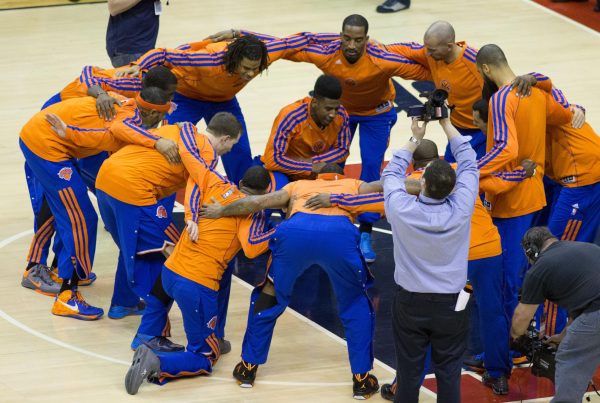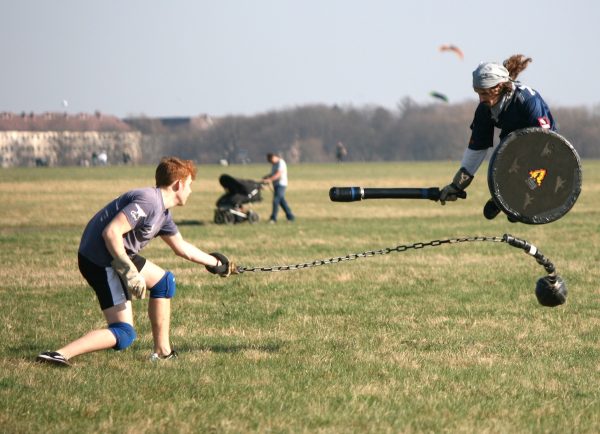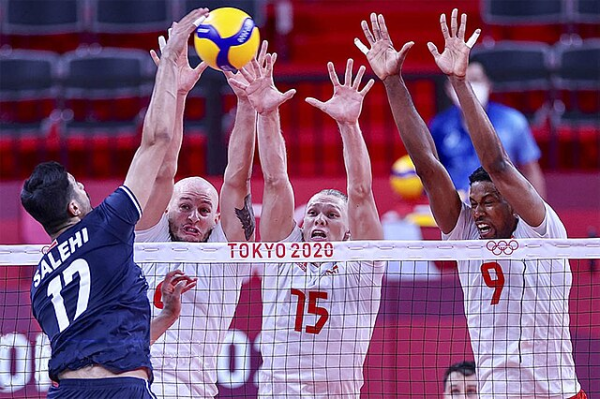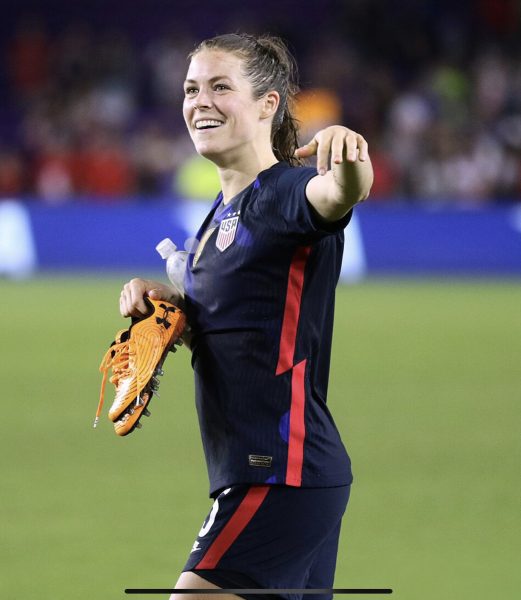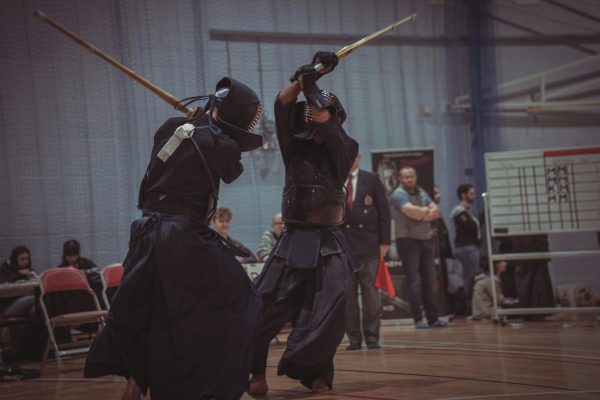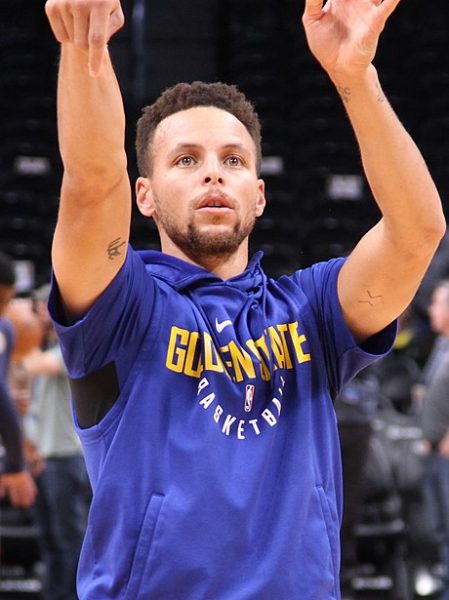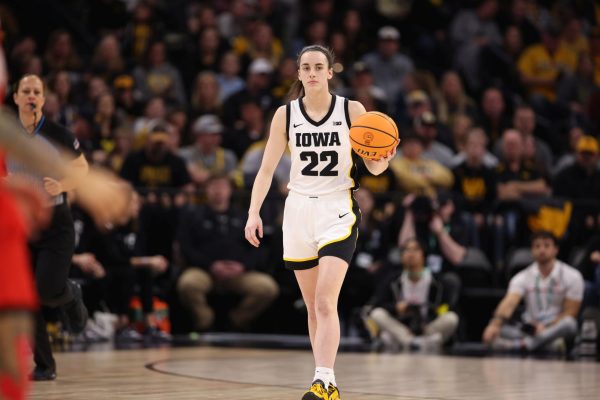The Reality for Bronx Science Wrestlers: Behind a Small Sports Community
Insight on the Bronx Science Wolverines and their winter wrestling 2022-2023 season.
The Wolverines started off the new year with a successful home tournament on 1/7/23. The team placed 1st for the girls and 2nd for boys overall against 22 other schools.
“Start jogging.”
These are the words that every wrestler either dreads or loves to hear.
For the Bronx Science wrestlers, practice starts off with a myriad of conditioning (the physical and mental training with the goal to improve endurance, strength, and overall performance) and drills: jogs, sprints, stairs, push-ups, sit-ups, rolls, more push-ups, and even more sit-ups. By the end, everyone is panting, sweating, and out of breath, but this is merely the beginning of an hour and a half of constant wrestling.
What is Wrestling?
Amateur Wrestling is a high-contact sport where the main goal is to overpower your opponent and get them on their back or pin them. Practiced professionally, in colleges, high schools, and even middle schools, wrestling is rising in popularity all over the country. Kids as young as 5 years old are involved in wrestling tournaments and able to win medals. There are hundreds of high school and college wrestling teams that go against each other every year. The youth is typically actively participating in wrestling while the long lasting love for the sport has established many coaches of these teams and referees of each tournament.
It is often an overlooked sport, as it is seen as a dangerous and violent one. However, it is commonly mistaken as a different form of wrestling. The sport is not exactly like what many see in WWE, which is frequently considered to be ‘professional wrestling.’ Instead of starting in a ring, wrestlers are set on a mat and are unable to go out of bounds during the match. It is illegal to continuously harm their opponent and will be stopped if anyone is hurt or bleeding. Amateur Wrestling has strict rules so that both wrestlers are not severely injured by the end of the match. It consists of much more discipline and technique, completely different from the standard wrestling stereotypes. Professional wrestling has grown in popularity over the years as amateur wrestling has remained generally unknown to the general public. There is much more to amateur wrestling that makes it much better than the ‘professional wrestling’ many see on television.
Types of Wrestling
There are various types of amateur wrestling: Folkstyle (collegiate), Freestyle, and Greco-Roman wrestling. They each have their own set of rules and additions, but all share the same goal — to get your opponent on their back.
Folkstyle is known as the traditional form of wrestling, despite it being not as popular as the other forms while also being largely similar to them. This style has an emphasis on controlling the opponent. There are certain rules in folkstyle that a wrestler must follow. Wrestlers cannot clasp or lock their hands around their opponent’s back when their opponent has both knees touching the ground or throw their opponent over their head. To win, a wrestler must pin their opponent (when both shoulder blades are touching the mat), get a technical fall (when they exceed their opponent’s amount of points by 15), or by decision (when neither a pin or technical fall occurs throughout the match, the winner is whoever that has the greatest amount of points by the end of all 3 periods). In a match, there are 3 periods, each consisting of 2 minutes. If both wrestlers end up with the same amount of points by the end of the 3 periods, overtime will occur in which the wrestler who manages to score a point first leaves victorious.
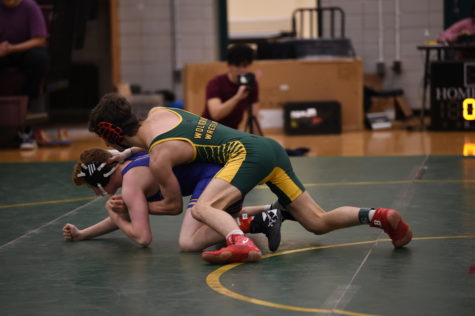
Freestyle is similar to folkstyle, but with fewer rules. A wrestler has a greater variety of moves that are allowed to be used in this type of wrestling, but with many of the same rules still set in place for folkstyle. Folkstyle limits many moves that are allowed in freestyle, such as suplexes and clasping. A suplex basically describes when one throws their opponent over their head onto the mat; it is considered potentially dangerous in folkstyle, which is why it is illegal in that style of wrestling. However it is allowed in freestyle as freestyle has a larger emphasis on exposure points. Exposure points are the main difference between folkstyle and freestyle as there is a different scoring method. Every time a wrestler exposes their opponent’s back, they get 2 points; when a wrestler goes out of bounds, which would be the largest circle on the mat, the opponent would get 1 point. In addition, if they get their opponent back close to the mat, almost like tilting, they will be awarded with 4 points. Unlike folkstyle in which technical fall requires 15 points, technical fall in freestyle requires 10 points. The periods are also different in freestyle, instead of having three periods of 2 minutes like in folkstyle, it has two 3 minute periods and a 30 second break in-between.
Greco-Roman has similar rules to freestyle but is completely different in one aspect — a wrestler is not allowed to use their legs to perform any actions or hold their opponent anywhere below the waist. These differences make all three styles of wrestling completely different and gives a large variety within the sport. Greco-Roman and freestyle are the most famous types of wrestling globally and are often seen in the Olympics. Folkstyle is the most popular within the United States and is frequently found within college and high school level wrestling.
Safety
Many people are fundamentally unaware of the safety of the sport. There are times where one is going to get hurt, just like every other competitive athletic activity. However, wrestling is structured such that a wrestler will only wrestle with someone that is within their weight class. For instance, you will not see a 120 lb. wrestler attempting to pin a 191 lb. wrestler. Wrestlers are set into weight classes based on their weight. To be considered in a certain weight class, they must weigh under the weight class number. For example, if a wrestler is in the 172 weight class, they must maintain under 172 to wrestle others in that weight class. For high school boys, the weight classes are: 102 (lb.), 110, 118, 126, 138, 145, 165, 172, 189, 215, and 285. The weight classes for high school girls are: 101 (lb.), 109, 116, 123, 136, 143, 155, 170, 191, and 235.
There are also rules to ensure the safety of all wrestlers which allow the sport to be more enjoyed than feared.
It is illegal to choke, poke, and scratch your opponent. Wrestlers are required to cut their nails so that they won’t be able to scratch anyone. If the referee witnesses something to be dangerous during the match, they will blow their whistle to indicate a stop. The wrestlers will be repositioned to later continue wrestling. A wrestler is not allowed to grab their opponent’s headgear or their clothing because it poses potential danger. Once a wrestler obtains three penalties within a match or causes intentional injury against their opponent, they will be disqualified.
If one bleeds or gets injured during the match, they are given a total of 5 minutes in order to stanch the bleeding and an additional 2 minutes to get back on the mat. During this allotted time, the wrestlers will try their best to stop the bleeding with bandages and napkins so when it does stop, they are able to get back on the mat and continue wrestling. If a wrestler is severely injured or cannot stop the bleeding before the time runs out, then they will be disqualified from the match and the opponent will receive a win by forfeit. The safety of both wrestlers is the utmost priority in matches; the health and wellbeing of a wrestler overrules at all costs.
“You always have to expect the chance of injuries when joining a sport, especially in a sport like wrestling,” William Loh ’25 said. “However we always train to prevent them. Injuries might even build us to become stronger.”
Scoring in (Folkstyle) Wrestling
There are a vast majority of moves that a wrestler can implement in a match; they all have names that many end up forgetting, especially when many of them have unique names like the alligator roll, cradle, fireman, and many more. Many of these moves are used and all build up to obtain points. Points in a match are scored by certain categories; this is the folkstyle scoring standard:
Take downs: It is when one wrestler is able to get their opponent to fall onto the mat from a neutral position, where both wrestlers are standing and facing each other (worth 2 points).
Reversal: A switch in control; the wrestler that was being controlled ends up taking control of their opponent (worth 2 points).
Near-fall: It is when a wrestler is able to expose their opponent’s back onto the mat for an extended amount of time. If the position is maintained for 2-4 seconds, 2 points will be awarded. If it is held for at least 5 seconds, 3 points will be awarded and no more even if it is held for longer.
Escape: A wrestler is able to escape from the grasp of their opponent, thereby being able to get into a neutral position.
Penalty: Either that points will be deducted by a wrestler for causing a penalty or their opponent will be awarded points. (usually 1 point). Penalties include technical violations, such as using illegal moves on your opponent or stalling too frequently. Penalty warnings will be given to the wrestlers only once; if a wrestler continues to stall even after their warning, the opponent will get 1 point each time they keep stalling.
Points will be accumulated using these categories. The referee will indicate these points in real time while observing the match and then points will be recorded onto a monitor.
Why Wrestling?
Wrestling requires a person’s fullest commitment and focus, as it is physically demanding and takes up much of their free time. There is practice every day, and the best way to get better is to consistently practice and challenge yourself even more than your opponents are. It is truly a competition of who is more willing to go above and beyond.
Wrestling seems scary, and it is. On the mat, a wrestler could get kicked, punched, scratched, and bruised; it occurs in every match. However, there are many more aspects to the sport that keep hundreds of thousands of people across the world engaged. The aggression, conditioning, hard work, strength, and perseverance required for wrestling is unique to the sport. It is so different compared to many other sports, such as volleyball and basketball. The experience of wrestling builds a wrestler character, one that is unstoppable.
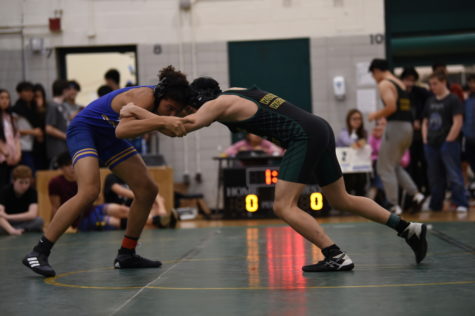
Many build a professional wrestling career and wrestle in the Olympics and National Championships. Even after their wrestling career, most continue to coach the youth. Coach Chris Smith, the Bronx Science wrestling coach, had a professional wrestling career during his own youth. After a while, and quite a few injuries, he decided to coach the Bronx Science’s wrestling teams on the side. He drives from Long Island to Bronx Science every day in the afternoon to coach the wrestlers. Many weekends were sacrificed as well. He has still stayed committed to the sport and plans to continue teaching.
“Since I started wrestling, I’ve learned a new mindset, called a wrestler’s mindset. A mindset that is built upon hours of practice and represents an unstoppable, tough mentality. This is what drives all wrestlers to continue every day,” Choy said.
Wolverines Throughout the Years

(Shawna Khuu)
The Bronx High School of Science is well known throughout PSAL as a tough opponent, especially in wrestling. Both boys and girls teams have placed high and earned medals throughout numerous tournaments. The Wolverines hold three PSAL Boys Wrestling Championships in a row, from the 2015-2016 to 2017-2018 seasons. The Winter 2023 Boys’ Varsity Wrestling team has remained strong and has made it into playoffs. This winter season, they placed second in the Bronx Borough Championships and their girls placed first at D1 City Championships/Girls Championships.
Captain Joshua Choy ’23, in the weight class 138, has been wrestling since middle school. He continued wrestling throughout three seasons in high school, with the exclusion of one year due to the pandemic, and has placed on top in multiple PSAL tournaments. He had an extraordinary win-loss ratio of 16-2 last season, and was also titled as the team’s MVP during the winter 2022 season. He continues to qualify for tournaments for the rest of the season and is aiming to place at City Championships.
“I’ve been wrestling for a long period of my life, and I wouldn’t regret it at all. The victories make it all worth it.” Choy said.
Fellow Captain Ashur George ’23, in weight class 145, started wrestling during his ninth grade year. He has been wrestling every season since and has placed top 3 in multiple tournaments, bringing home countless medals throughout his time wrestling. He is a two time City Championship qualifier and placed 2nd in PSAL Bronx Borough Championships, under the 138 lb weight class, in his junior year. Now as a senior, he has returned and placed 3rd in the PSAL Bronx Borough Championships 23.
“Wrestling has been a guiding light for me throughout high school. It’s given me some of my hardest challenges and helped me achieve some of my greatest successes. It’s what developed me to be who I am today,” Ashur said.

Captain Jason Jiang ’23, in weight class 160, began his wrestling journey during his freshman year at Bronx Science. Immediately, he was able to place 3rd at City Championships during his first season and from then on, continued to win medals in tournaments every season. Although the pandemic had restricted his streak during his sophomore year, he came back even stronger. He was placed 7th in the 172 lb. weight class at City Championships in his junior year and 4th in 160 lb. weight class at Mayor’s Cup Championships this January. Just recently, Jiang placed first in the PSAL Bronx Borough Championships and now holds the title of Bronx Borough Champion of the weight class of 160 lb. Overall, he has placed top three in 12 tournaments and third at City Championships this year.
“Reaching that many accomplishments definitely wasn’t easy. It required lots of practice and commitment. You can’t get anywhere without committing yourself,” Jiang said.
The last captain, Ariel Ofri-Akman ’23, in the weight class 165, has been wrestling since her junior year and has managed to move up the ranks exponentially. A beginner and gold medalist all within the same year, Ariel has won numerous medals from multiple tournaments There may be too many to count. She is currently on the New York National Wrestling Team and is a Fargo Nationals qualifier. Just in January 2023 alone, she left with a gold medal from the Mayor’s Cup Championships – a tournament specifically for qualified PSAL wrestlers – and Eastern States Championships – where the best wrestlers of 7 states from the East Coast all compete to find the best wrestler. She won first place in Girls’ PSAL City Championships and Girls Wrestling State Championships in the spring as well. This winter, she has won the title of the Girls’ City Champion for Folkstyle at her respective weight class and is a Wrestling State Champion qualifier. Ariel will continue to add to her already large stash of medals as she proceeds as captain of the Bronx Science girls wrestling team.
“It’s great to see all of your hard work come to life, like I can physically see how far I’ve come,” said Ofri-Akman.
Commitment
Wrestlers spend hours learning new moves, practicing them, and doing it all over again every single day. It gets challenging at times with more time spent on wrestling, but the reward is always much more gratifying. “I feel stronger because nothing is as difficult as being forced to wrestle even when you are completely exhausted and can’t even breathe properly,” said Rio Siby’24, a wrestler from Francis Lewis High School. “Wrestling takes up half of my available time for other activities, and yet I would rather be sitting on the mat training with 30 other wrestlers with the same goal, to win.”
A Wrestling Community
Every wrestler is welcomed into a close knit community. The team is together for hours during practice and the almost 8 hour tournaments that take place every other weekend. They are always the first to witness each other’s successes and downfalls, and are the ones that support each other the most. A wrestler usually spends half of their days with their related and wrestling families. They also get a chance to take place in a large community of wrestlers among all 5 boroughs of New York City.
“Wrestling has brought all of us together, everyone with the same goals and challenges. I have met some of the most important people through the sport, within my own school and the city. One of the many reasons I stick with wrestling is the family I’ve earned in such a short span of time and how much they mean to me,” Siby said.
Every wrestler that steps on the mat everyday sets themselves up for the challenge. “It is a battle every day; there is no loss unless you give up on yourself, that’s the greatest loss,” states Richie Chen’24, a beginner and starter for the Boys’ Varsity Wrestling team this winter. “I’ve discovered a part of me that wants to continuously challenge myself and push to reach my full potential. It is rewarding to see how far you have improved since the beginning.”
“Losing is the hardest part of it all, to see your efforts easily go down the drain. However, there is no losing when you are facing your opponent head on. The only loss is when one gives up on themselves. There is no losing when you are gaining experience; with the right perspective, it is always a victory in the end,” Loh said.
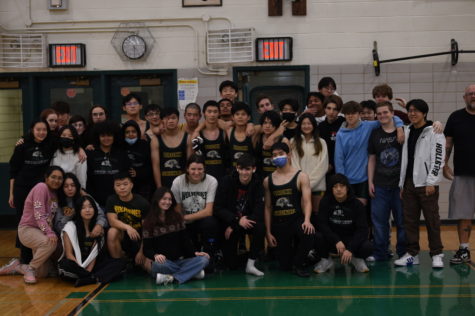
There is much more to the sport than what it looks like on television, making wrestling truly unique from any other sport. The lessons learned and the people one meets make the experience last a lifetime. Wrestling allows people to build an unbreakable character and mindset that allows them to persevere through anything.
“Nothing is harder than wrestling; this is the wrestling lifestyle.” Jiang said.
Coach Smith mentioned one quote that he believes fully encapsulates what wrestling is: “Once you’ve wrestled, everything else in life is easy,” said Dan Gable.
There is much more to the sport than what it looks like on television, making wrestling truly unique from any other sport. The lessons learned and the people one meets make the experience last a lifetime. Wrestling allows people to build an unbreakable character and mindset that allows them to persevere through anything.
Shawna Khuu is a Staff Reporter for the ‘The Science Survey.' She enjoys listening to music in her spare time and finding new spots at which to volunteer....
Tristan Borlongan is a Spotlight Section Editor for 'The Science Survey.' As a journalist, Tristan has a curiosity for international conflict and geopolitics....
Acadia Bost is a returning Editor-in-Chief for ‘The Science Survey.’ Placing an emphasis in their writing on the more structural, long term problems...



